On the trail, looking for the names of four victims and, perhaps, their killer
| Published: 02-03-2017 10:32 AM |
The snow is frozen, making each step sound like you’re eating crunchy breakfast cereal.
There’s a slight downward slope through brush and trees, so we’re cautious as we move to the spots where a pair of barrels were found years ago, barrels mixed with horror and mystery.
Fresh tracks are already there, a sure sign that others know the Allenstown location where four still-unidentified bodies – a woman and three little girls – were discovered.
No one, however, knows this spot and the background of this case like former New Boston resident Ronda Randall, who now lives in Brunswick, Maine. For six years, she’s worked full time trying to discover the identities for those four people, mixing in her own, potentially dangerous investigation in pursuit of the killer.
She’s been chased off property for digging too hard. Law enforcement officials have given her what she termed “the talk.”
In other words, they’ve told her, “Thanks, Ronda, but let us do our job.”
“Our first trip here was Memorial Day 2011,” Randall tells me as our group continues, leading to a spot about 100 yards from Deerfield Road.
She points left.
Article continues after...
Yesterday's Most Read Articles
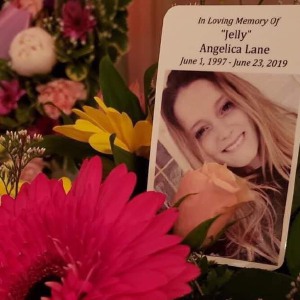 Mother of two convicted of negligent homicide in fatal Loudon crash released on parole
Mother of two convicted of negligent homicide in fatal Loudon crash released on parole
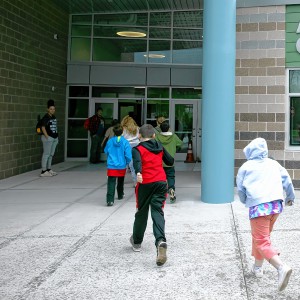 Students’ first glimpse of new Allenstown school draws awe
Students’ first glimpse of new Allenstown school draws awe
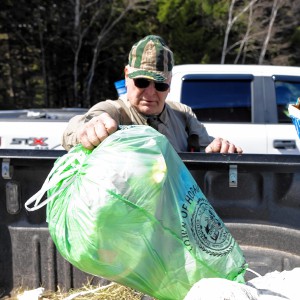 Pay-by-bag works for most communities, but not Hopkinton
Pay-by-bag works for most communities, but not Hopkinton
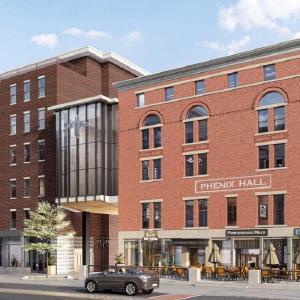 ‘Bridging the gap’: Phenix Hall pitch to soften downtown height rules moves forward
‘Bridging the gap’: Phenix Hall pitch to soften downtown height rules moves forward
 Regal Theater in Concord is closing Thursday
Regal Theater in Concord is closing Thursday
 ‘We’re just kids’: As lawmakers debate transgender athlete ban, some youth fear a future on the sidelines
‘We’re just kids’: As lawmakers debate transgender athlete ban, some youth fear a future on the sidelines
“There.”
There’s not much to see, beyond a subtle clearing where Randall says blueberry bushes grow in warm weather. In 1985, though, the spot held clam-tight secrets, those that have taken investigators across the country, baffled them, frustrated them, left them shaking their heads.
The second barrel wasn’t found until 2000, closer to the road, leading Randall to speculate that it was placed there years after the first one.
The attorney general’s office and the state police Cold Case Unit announced at a recent press conference that a man with lots of aliases killed the Allenstown four, and probably killed the woman he took off with 36 years ago as well. For press purposes, the killer was called Bob Evans, and he died seven years ago in a California prison after pleading guilty to a murder out there.
The victim in that case was Eunsoon Jun. The missing woman who lived in New Hampshire was Denise Beaudin. Beyond those two, names are hard to come by.
Randall worked to change that, telling me, “I’m a little OCD now. I’m sure of that.”
‘Persistent’
With the killer dead, Randall might back off somewhat and leave the loose ends to investigators and internet wizards. Meanwhile, she’s left a trail of dogged determination and passion behind. It’s part of her makeup, and you’re tipped off to that trait immediately when you meet her.
It’s her eyes, piercing and focused, as though she’s forever looking for answers, forever trying to figure out what makes you tick, forever trying to give unknown families closure about unknown victims.
Her brother, Scott Maxwell, a builder in Manchester, has been her partner in this search, right from the start. His eyes, softer, less intense, tell a story, too. He doesn’t say much. He listens to his sister question people. He looks for curious body language. He goes to the library and researches. He accompanies her in case she encounters trouble.
And he succinctly describes his sister to me as “persistent.”
A social worker, Randall has been doubling as a private super sleuth for years. She pays $400 a year for Ancestry.com and calls herself a genealogist. In today’s world, this “hobby” is more common than it once was.
“In the internet age, it seems to be happening more and more,” said Senior Assistant Attorney General Jeffery Strelzin, who confirmed Randall’s obsession with this case. “You have what I would call internet experts who would take an interest in these cases, and they go out and do some work on their own.”
People adopted as children seek Randall’s help. Who were their parents? Where did they come from? She says she’s worked on 100 such cases.
In fact, a week before the press conference called to announce findings on Evans, Randall says, she found a woman’s birth father. Twenty-five years earlier, she found the woman’s birth mother, but that didn’t go well.
“Unlike the mother, he was delighted to be found,” Randall told me. “(The daughter) had me make a phone call to him, as I had years before to her birth mother, and so she had even more trepidation. Instead, I got a 76-year-old man who said, ‘Thank you from the bottom of my heart for finding me.’ ”
There’s been heartache. Like the time Randall says she found a missing person’s death certificate and a newspaper article, revealing that the teen, Cynthia Louise Putnam, had died from a drug overdose. Randall, not the police, called the family, who lived in Vermont.
Nothing, however, has grabbed Randall’s attention like the Allenstown case. She hadn’t heard about it while living in Maine until 2011. She’s thought about little else since.
‘Knocking on doors’
I asked Randall why this unnatural interest evolved within her. She wasn’t sure. Maybe it had something to do with her two nephews, Seth and Isaiah, who died as infants, and her niece, Paige, who died from Leukemia at 2 ½.
“At the time we were not thinking about it consciously,” Randall said. “But we had such a visceral response to this case. When this story came to our attention, it spoke to us like no other thing I’ve ever researched.”
She says she’s spoken to more than 5,000 people throughout New England. She says she’s got thousands of pages of type-written interviews. She went to Florida, where she spoke to retired former members of the Allenstown police force.
She knocked on doors of all the homes near the wooded site where the barrels were found. She approached known sex offenders at their homes, seeking information. She called the state police cold case unit with tips, once directing them to a home that, she was told, had a barrel buried in the backyard.
Yes, the barrel was there. No, it had nothing inside connected to the case.
Another time, Randall spoke to a man with a record of incarceration, then called the Cold Case Unit. Check this guy out, she told them. They did, and while police might follow up on leads, they’d never tell a tipster about their investigation.
So when Randall went back for a follow-up interview, she was met with a mad man and lots of f-bombs.
“Livid,” was how Randall described him. “Never seen a man so ballistic. He told us to get the “F” off his property. We left.”
Randall admitted to me that law enforcement officials were probably “rolling their eyes” each time she called them. She said she once got “the talk,” the one about not misrepresenting who she was, the one about not getting in the way of an active investigation, the one about the danger she might be putting herself in.
Remember, at the time Randall was poking around, no one knew the Allenstown killer was dead.
“(Randall) has poured a tremendous amount of energy and time into trying to identify these victims,” Sgt. Mike Kokoski of the Cold Case Unit, who joined Strelzin at the recent press conference, told me in an email.
He continued: “For obvious safety reasons, we cannot endorse the idea of citizens doing ‘field work’ or knocking on doors and trying to investigate a murder. The potential of a dangerous confrontation resulting from such efforts is real and ever present.”
Strelzin agreed, adding, “They could really negatively impact an investigation where they spook witnesses. You cause people to destroy evidence, or tamper with witnesses. Things like that could happen.”
‘Scene of the crime’
Conversely, the public can help. Strelzin mentioned the case of Manuel Gehring, the Concord man who killed his two young children in 2005, buried them in graves in Ohio, then killed himself, leaving police with a mystery. They released information, and a woman found the bodies in Ohio with the help of her dog.
In 2014, Randall’s work led to a man named Bob Evans, one of at least nine aliases for this killer, but officials didn’t connect him to the Allenstown murders until two years later.
Exactly how Randall came upon Evans and what his relevance was at the time is unclear. She declined comment, but Kokoski said in his email, “That clearly shows how potentially critical information can be found by a civilian.”
Randall says her work on this case is done, after six years and many nights in which she woke her husband, David, at 2 a.m. to talk about the case.
David was with us when we visited the site, which sits on property, still owned by Edward Gallagher, that had been used as land for discarding debris. Randall called it a junkyard.
Gallagher lives on the Seacoast and was unavailable for comment, but Randall says she called him after the press conference and told him authorities had found the killer.
“He said he just wanted this to be over and he wants the girls to get their names back,” Randall told me.
Back in the day, Gallagher ran a convenience store along Deerfield Road and lived in a mobile home behind it. Both are gone now. After Randall and her brother pointed out the locations where the barrels were found, we made our way back up the slope to the road, crunching on the frozen snow along the way.
Randall told me she has four rocks she picked up at the site. She brought them with her to the press conference, hoping to write the names of the Allenstown four on each rock with a Sharpie.
She still hopes to do it one day.
“To honor each of them,” she said.
]]>


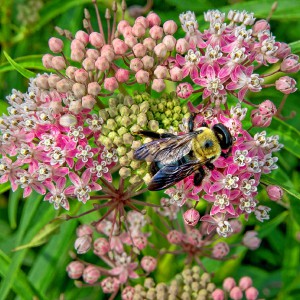 Opinion: This Earth Day, help keep local land clean and healthy
Opinion: This Earth Day, help keep local land clean and healthy Opinion: Student power: Confronting collaborators and cowards at home and abroad
Opinion: Student power: Confronting collaborators and cowards at home and abroad Opinion: Adopting the right 306 Rules
Opinion: Adopting the right 306 Rules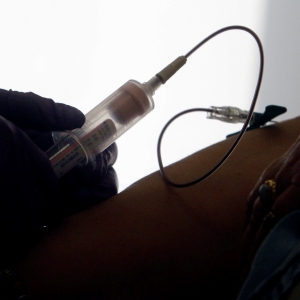 Opinion: Being and becoming: A good doctor in the age of artificial intelligence
Opinion: Being and becoming: A good doctor in the age of artificial intelligence
